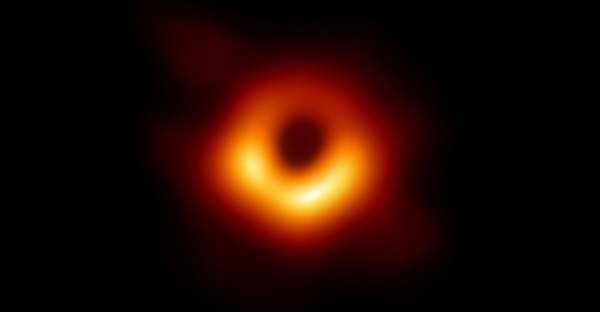What are intermediate-mass black holes? – Astronomy Magazine
Astronomers think that supermassive black holes lurk in the hearts of most, if not all, large galaxies. In April 2019, a massive international collaboration of researchers used the Event Horizon Telescope to image one such supermassive black hole at the center of the galaxy Messier 87, located some 54 million light-years away.
Event Horizon Telescope collaboration
But what about the in-betweeners? Shouldn’t there should also exist a class of mid-sized black holes that split the difference between stellar-mass and supermassive black holes? These cosmic middleweights, which would range from about 100 to 1 million solar masses — though the specific range varies depending on who you ask — are referred to as intermediate-mass black holes (IMBHs). And although astronomers have found several compelling IMBH candidates spread throughout the universe, the jury is still out on whether they truly exist. However, the evidence is beginning to pile up.
Is the proof out there?
Though conclusive proof of IMBHs remains elusive, over the past few decades, there have been a number of studies that have uncovered intriguing evidence hinting at the existence of these not-so-big, not-so-small black holes.
For example, in 2003, researchers used the ESA’s XMM-Newton space observatory to identify two strong, distinct X-rays sources in the nearby starburst galaxy NGC 1313. Because black holes tend to ferociously gobble up material that gets too close and belch out high-energy radiation, they are some of the strongest known emitters of X-rays. And by pinpointing NGC 1313’s X-ray sources and studying how they periodically flash, in 2015, researchers were able to constrain the mass of one of the galaxy’s suspected black holes, known as NGC 1313 X-1. They calculated it’s about 5,000 times the mass of the Sun, give or take about 1,000 solar masses, which would put it firmly in the mass range of an intermediate-mass black hole.
Likewise, in 2009, researchers uncovered even stronger evidence for the existence of a medium-sized black hole . Located some 290 million light-years away near the edge of the galaxy ESO 243-49, the team observed an incredibly bright X-ray source called HLX-1 (Hyper-Luminous X-ray source 1) that did not have an optical counterpart. This suggests the object is not simply a star or background galaxy. Additionally, the researchers found HLX-1’s X-ray signature varied with time, suggesting a black hole is brightening every time a nearby star makes a close approach, feeding gas to the black hole and causing brief outbursts of X-rays that then slowly fade away. Based on the brightness of the observed flashes, the researchers calculated a minimum mass of the black hole of about 500 times the mass of the Sun, though some estimates put its weight closer to 20,000 solar masses.
“Such a detection is essential,” said lead author Sean Farrell of the University of Leicester after the discovery. “While it is already known that stellar-mass black holes are the remnants of massive stars, the formation mechanisms of supermassive black holes are still unknown.” Farrell went on to explain that “the identification of HLX-1 is therefore an important step towards a better understanding of the formation of the supermassive black holes that exist at the center of the Milky Way and other galaxies.







